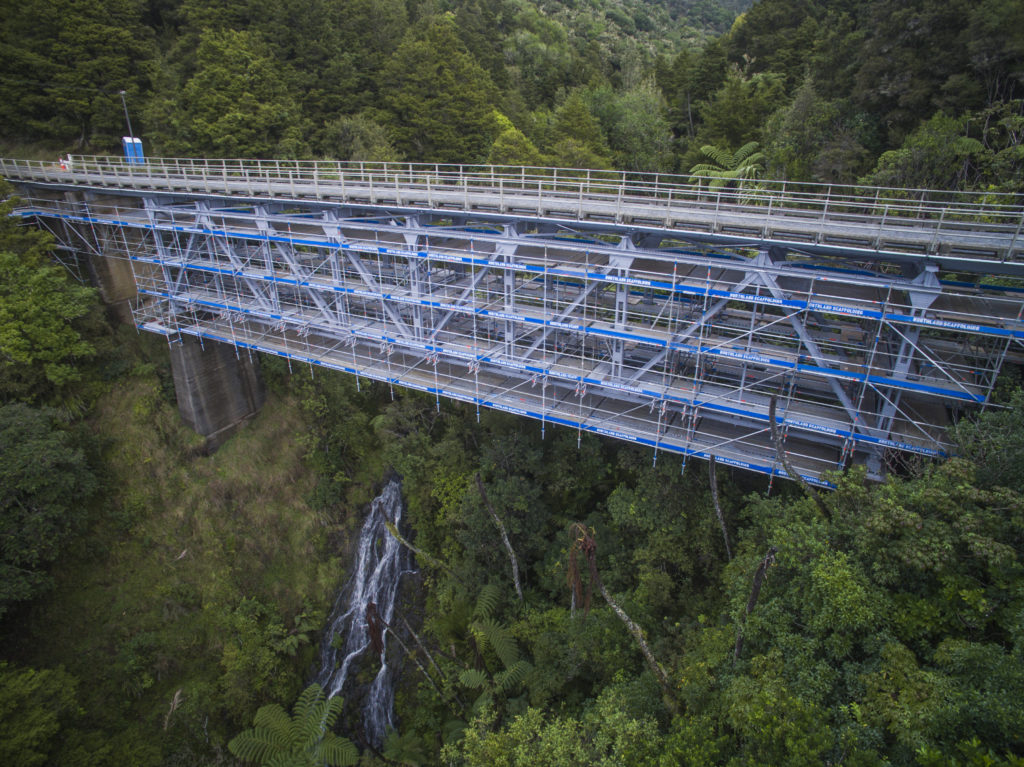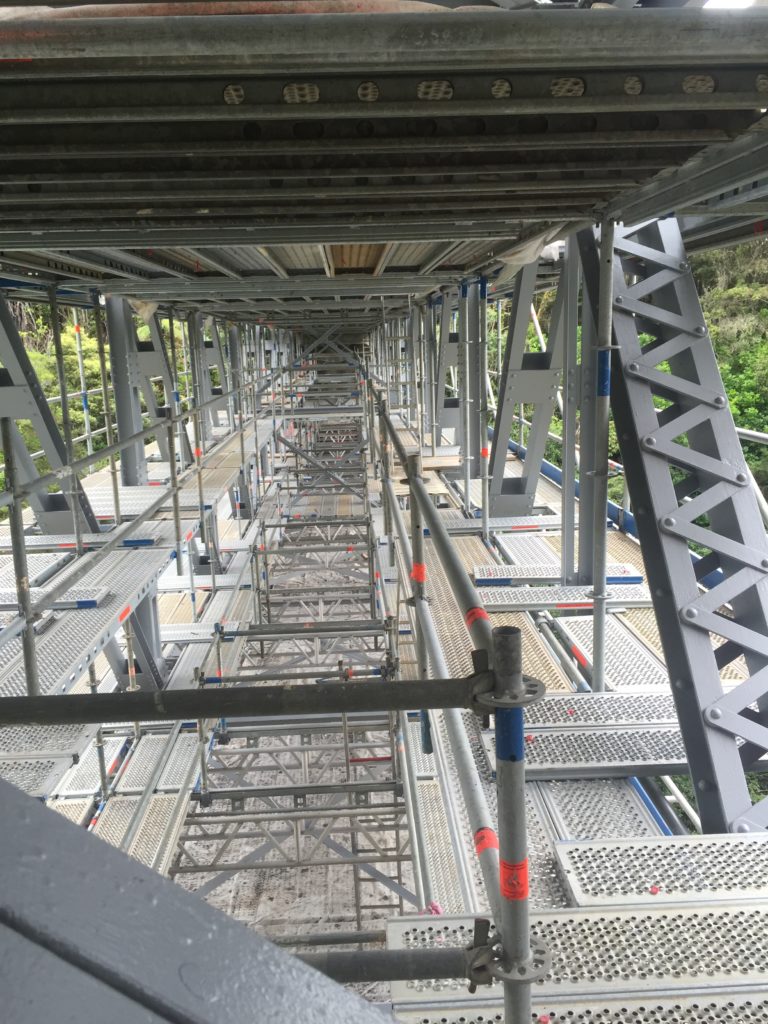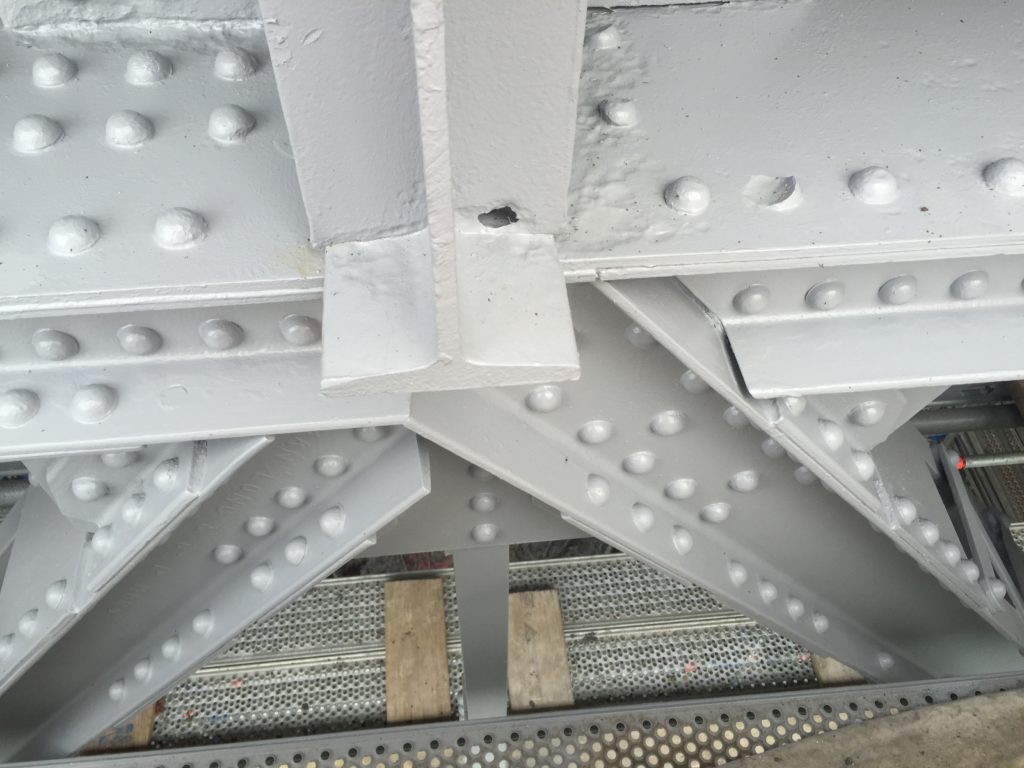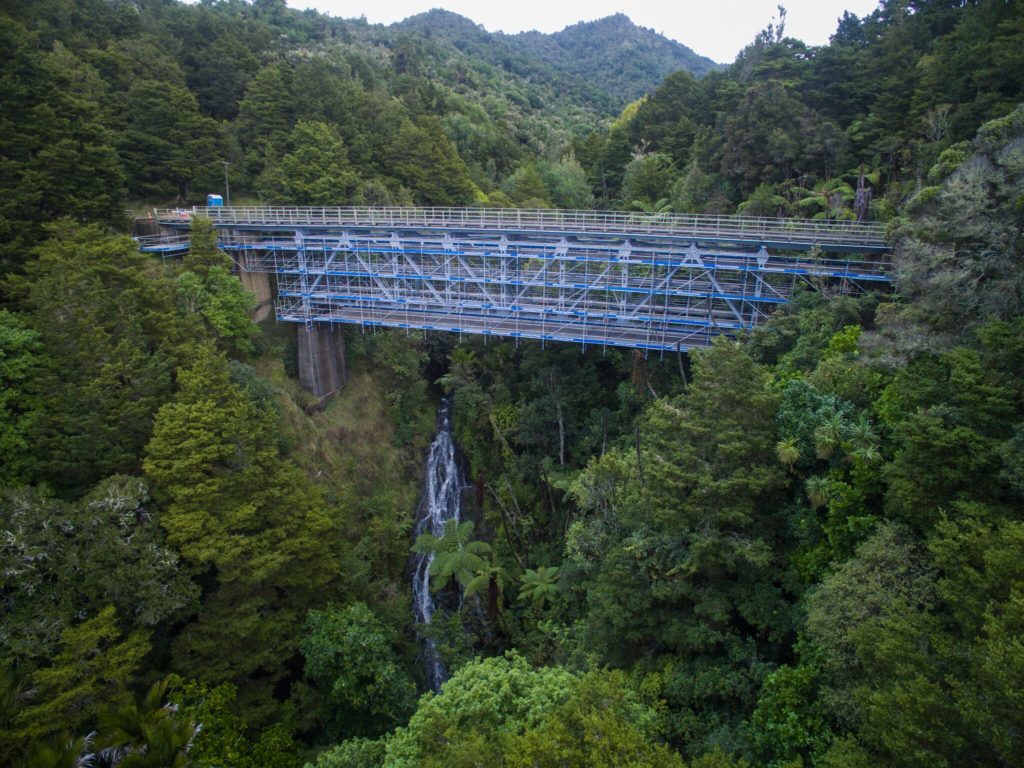Kirikopuni Bridge Upgrade was a contract to replace structural steel components to the trusses under the bridge, along with the replacement of rivets & other associated components.
The works involved provision of full scaffold access to the truss, removal of and treatment of corrosion at the sides of the deck support beams at deck joints (83 locations), replacement of corroded sections of bearing areas of the Steel “I” beams (16 locations), replacement of existing sections of corroded/deteriorated steel plate (20 locations), Replacement of deteriorated rivets with high strength friction grip bolts (128 locations), treatment of surface corrosion on all truss members and steel beams surfaces (this has effectively been a repaint of the whole bridge) and deck joint replacements (3 joints), Bridge deck cleaning and sealing.
One of the most challenging aspects of this job was to manage all of the environmental risks. The bridge is located over a large viaduct of native bush and a fresh water stream so the risk of contamination or pollution was extremely high.
Another challenge was the location and access to the bridge. Not only was it located in a remote part of Northland with no material distributors nearby, it was also hard to get any materials or goods on site because of the access. The whole bridge had to be scaffolded to gain access to the areas that required work so getting materials and machinery out on the scaffolded platforms was often a challenge.
Working from a scaffold at a height of approximately 25m above the ground at the highest point, meant all staff & sub-contractors on site had to have appropriate training for working at heights.
The bridge is an iconic structure in Northland and the need to protect all the historic aspects of this bridge was huge. We needed to make sure that the work we did to the bridge, fitted into the aesthetics of the original structure.
The existing lead based paint had to be removed from parts of the bridge being repaired and then repainted with a new coat of paint. This meant that staff had to be specially geared up to deal with the toxic chemicals and to make sure that they were transported and disposed of in approved methods.
The completion of the current works will mean that the bridge will not require any major maintenance for at least the next 25 -30 years.



